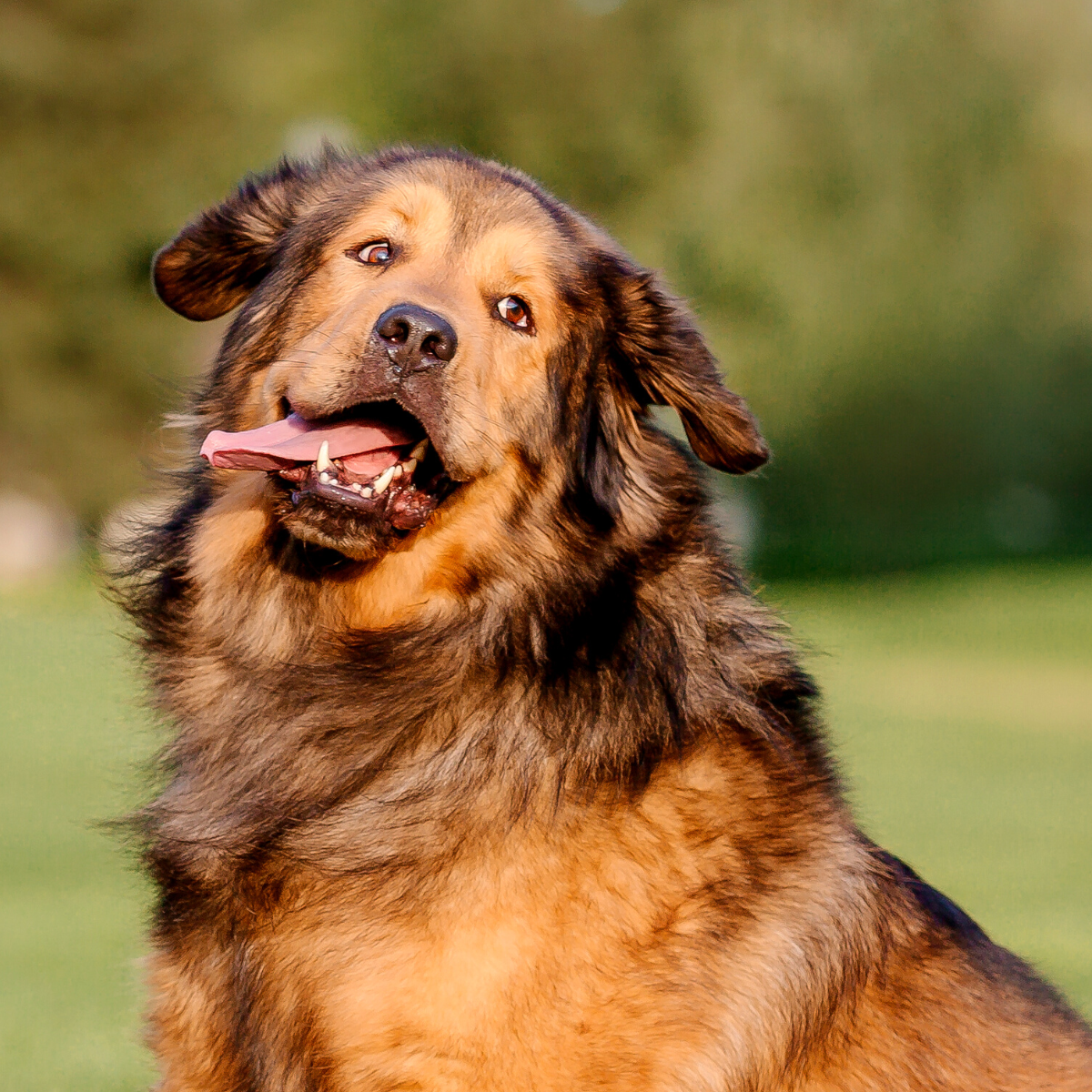EPAS1: The mountain gene
A very good Tibetan Mastiff
"Click here to listen to the full podcast episode"
Life is tough on the roof of the world. The lofty heights of the Himalayan mountains, more than four kilometres up, present a breathless environment with around 40% less oxygen than at sea level - conditions that would quickly sicken or even kill most of us.
But some hardy humans not only survive there, but they thrive. Tibetans have lived in the thin mountain air for more than 6,000 years thanks to a gene variant they originally inherited from the Denisovans - the elusive human species first identified by Svante Pääbo and his team from a sample in the Altai mountains around 1500 miles north of the Himalayas. The thin air has favoured the persistence of one particular version of a gene called EPAS1, which allows these mountain-dwellers to get along just fine despite the shortage of oxygen.
The story starts in 2010, when Rasmus Nielsen and his colleagues at the University of California Berkeley compared the genomes of 50 high-altitude Tibetans with Han Chinese and people with European ancestry from Denmark, all living less than 2 kilometres above sea level. The results were striking, with the team finding many genetic differences between the Chinese and Tibetans - groups that separated around 2750 years ago. Over half of the 30 biggest differences between the Tibetan and Chinese genomes were in genes linked to oxygen transport in the blood. And the biggest difference was near EPAS1, with a specific version being found in 87 per cent of the Tibetans, but only 9 per cent of the Han Chinese.
So, what does it do? All of us have an EPAS1 gene, which helps us respond to low oxygen conditions by producing more haemoglobin - the protein in our red blood cells that transports oxygen around the body. So you might expect that the particular version found in Tibetans might make them produce loads of haemoglobin, so they can make the most of the reduced oxygen found at high altitudes. But you’d be wrong. Instead, they found the opposite - Tibetans with the EPAS1 variants actually had lower haemoglobin levels than people living closer to sea level. Having very high levels of haemoglobin and red cells in the blood can increase the risk of blood clots and strokes. So instead, the researchers suggest that the variant may lead to a reduced number of red blood cells, thinning the blood and reducing the risk of strokes at high altitude.
In 2014, Nielsen and his colleagues made another curious discovery: not only does the Tibetan version of EPAS1 seem to be unique to this population, it appears to have come from Denisovans. But it’s not only high-altitude humans who have traces of ancestral ‘ghosts’ in their DNA, it’s their pets too.
Very wolf. Much fierce.
This terrifying and formidable creature is descended from mountain-dwelling wolves. Honest.
Tibetan mastiffs are dogs that look like they’re built for the mountains, with thick fur, large sturdy bodies and a fiercely loyal temperament that makes them ideal for guarding homes and livestock against predators.
Around 24,000 years ago, dogs made their way from China’s lowlands to the Tibetan plateau, alongside human travellers. Along the way, these early hounds quickly adapted to the harsh conditions and low oxygen found in the mountains, becoming the big bear-like breed we see today. But inside their burly bodies, these dogs also gained a variant in EPAS1 that enabled them to become the top of the world’s top dogs. The source? A long dead ‘ghost wolf’.
In 2016, researchers led by Zhen Wang from the Shanghai Institutes for Biological Sciences in China sequenced DNA from 29 Good Doggies and assorted relatives, including highland and lowland grey wolves from China, Tibetan mastiffs, Chinese lowland village dogs, and a golden jackal. They found two regions of DNA in the mastiffs that weren’t present in any other dogs, and appeared to have come from mountain-dwelling grey wolves - regions encompassing the EPAS1 gene along with another gene called HBB which is also linked to high altitude living.
A deeper analysis of 166 canine genomes in 2020 discovered that while Tibetan and Himalayan wolves are closely related to each other, around 40% of their genome comes from an unknown wolf-like species that long separated from living wolves and dogs, and that the high-altitude EPAS1 variant that’s found in Tibetan mastiffs and wolves probably came from this ancient ‘ghost wolf’.
The likely conclusion is that the precursors of today’s Tibetan mastiffs must have mated with grey wolves who were already roaming the frozen peaks more than 20,000 years ago and pinched their EPAS1 gene in the process. And in case you’re wondering, humans and dogs aren’t the only species with variations in EPAS1 that help them live on the roof of the world. There’s also evidence for similar EPAS1 variants in Tibetan horses and deer mice.
The story of EPAS1 is a neat example of how genetic variants can get into a population and be strongly selected for, if they bring a sufficiently useful advantage. After all, anyone throwing up and blacking out from altitude sickness a few thousand feet up a mountain isn’t likely to be in the mood for passing their genes on. And thin air also makes it biologically harder to conceive babies. So there’s a pretty strong selective pressure for the high altitude EPAS1 variant to stick around.
As we gather and analyse more genomes from populations all over the world and search for signatures of selection, who knows what other ancestral spectres and superpowers may be still lurking in the genomes of modern humans - and animals - today.
References
https://www.newscientist.com/article/dn25835-tibetan-altitude-gene-came-from-extinct-human-species/
https://www.science.org/content/article/tibetans-inherited-high-altitude-gene-ancient-human
https://www.science.org/content/article/genome-brings-ancient-girl-life
https://academic.oup.com/mbe/article/37/9/2616/5834723?login=false
https://journals.plos.org/plosgenetics/article?id=10.1371/journal.pgen.1008420





